Snack Foods
Dairy Products
Seasoning Toppings
Processed Foods
Confectionery
Cheddar Cheese Powder
Parmesan Cheese Powder
Mozzarella Cheese Powder
Blue Cheese Powder
American Cheese Powder
Dry Powder
Liquid Cheese Powder
Granulated Cheese Powder
Online Retail
Supermarkets
Convenience Stores
Specialty Stores
North America
Europe
South America
Asia Pacific
Middle East and Africa
North America Outlook (USD Billion, 2019-2035)
North America Cheese Powder Market by Application Type
Snack Foods
Dairy Products
Seasoning Toppings
Processed Foods
Confectionery
North America Cheese Powder Market by Product Type
Cheddar Cheese Powder
Parmesan Cheese Powder
Mozzarella Cheese Powder
Blue Cheese Powder
American Cheese Powder
North America Cheese Powder Market by Form Type
Dry Powder
Liquid Cheese Powder
Granulated Cheese Powder
North America Cheese Powder Market by Distribution Channel Type
Online Retail
Supermarkets
Convenience Stores
Specialty Stores
North America Cheese Powder Market by Regional Type
US
Canada
US Outlook (USD Billion, 2019-2035)
US Cheese Powder Market by Application Type
Snack Foods
Dairy Products
Seasoning Toppings
Processed Foods
Confectionery
US Cheese Powder Market by Product Type
Cheddar Cheese Powder
Parmesan Cheese Powder
Mozzarella Cheese Powder
Blue Cheese Powder
American Cheese Powder
US Cheese Powder Market by Form Type
Dry Powder
Liquid Cheese Powder
Granulated Cheese Powder
US Cheese Powder Market by Distribution Channel Type
Online Retail
Supermarkets
Convenience Stores
Specialty Stores
CANADA Outlook (USD Billion, 2019-2035)
CANADA Cheese Powder Market by Application Type
Snack Foods
Dairy Products
Seasoning Toppings
Processed Foods
Confectionery
CANADA Cheese Powder Market by Product Type
Cheddar Cheese Powder
Parmesan Cheese Powder
Mozzarella Cheese Powder
Blue Cheese Powder
American Cheese Powder
CANADA Cheese Powder Market by Form Type
Dry Powder
Liquid Cheese Powder
Granulated Cheese Powder
CANADA Cheese Powder Market by Distribution Channel Type
Online Retail
Supermarkets
Convenience Stores
Specialty Stores
Europe Outlook (USD Billion, 2019-2035)
Europe Cheese Powder Market by Application Type
Snack Foods
Dairy Products
Seasoning Toppings
Processed Foods
Confectionery
Europe Cheese Powder Market by Product Type
Cheddar Cheese Powder
Parmesan Cheese Powder
Mozzarella Cheese Powder
Blue Cheese Powder
American Cheese Powder
Europe Cheese Powder Market by Form Type
Dry Powder
Liquid Cheese Powder
Granulated Cheese Powder
Europe Cheese Powder Market by Distribution Channel Type
Online Retail
Supermarkets
Convenience Stores
Specialty Stores
Europe Cheese Powder Market by Regional Type
Germany
UK
France
Russia
Italy
Spain
Rest of Europe
GERMANY Outlook (USD Billion, 2019-2035)
GERMANY Cheese Powder Market by Application Type
Snack Foods
Dairy Products
Seasoning Toppings
Processed Foods
Confectionery
GERMANY Cheese Powder Market by Product Type
Cheddar Cheese Powder
Parmesan Cheese Powder
Mozzarella Cheese Powder
Blue Cheese Powder
American Cheese Powder
GERMANY Cheese Powder Market by Form Type
Dry Powder
Liquid Cheese Powder
Granulated Cheese Powder
GERMANY Cheese Powder Market by Distribution Channel Type
Online Retail
Supermarkets
Convenience Stores
Specialty Stores
UK Outlook (USD Billion, 2019-2035)
UK Cheese Powder Market by Application Type
Snack Foods
Dairy Products
Seasoning Toppings
Processed Foods
Confectionery
UK Cheese Powder Market by Product Type
Cheddar Cheese Powder
Parmesan Cheese Powder
Mozzarella Cheese Powder
Blue Cheese Powder
American Cheese Powder
UK Cheese Powder Market by Form Type
Dry Powder
Liquid Cheese Powder
Granulated Cheese Powder
UK Cheese Powder Market by Distribution Channel Type
Online Retail
Supermarkets
Convenience Stores
Specialty Stores
FRANCE Outlook (USD Billion, 2019-2035)
FRANCE Cheese Powder Market by Application Type
Snack Foods
Dairy Products
Seasoning Toppings
Processed Foods
Confectionery
FRANCE Cheese Powder Market by Product Type
Cheddar Cheese Powder
Parmesan Cheese Powder
Mozzarella Cheese Powder
Blue Cheese Powder
American Cheese Powder
FRANCE Cheese Powder Market by Form Type
Dry Powder
Liquid Cheese Powder
Granulated Cheese Powder
FRANCE Cheese Powder Market by Distribution Channel Type
Online Retail
Supermarkets
Convenience Stores
Specialty Stores
RUSSIA Outlook (USD Billion, 2019-2035)
RUSSIA Cheese Powder Market by Application Type
Snack Foods
Dairy Products
Seasoning Toppings
Processed Foods
Confectionery
RUSSIA Cheese Powder Market by Product Type
Cheddar Cheese Powder
Parmesan Cheese Powder
Mozzarella Cheese Powder
Blue Cheese Powder
American Cheese Powder
RUSSIA Cheese Powder Market by Form Type
Dry Powder
Liquid Cheese Powder
Granulated Cheese Powder
RUSSIA Cheese Powder Market by Distribution Channel Type
Online Retail
Supermarkets
Convenience Stores
Specialty Stores
ITALY Outlook (USD Billion, 2019-2035)
ITALY Cheese Powder Market by Application Type
Snack Foods
Dairy Products
Seasoning Toppings
Processed Foods
Confectionery
ITALY Cheese Powder Market by Product Type
Cheddar Cheese Powder
Parmesan Cheese Powder
Mozzarella Cheese Powder
Blue Cheese Powder
American Cheese Powder
ITALY Cheese Powder Market by Form Type
Dry Powder
Liquid Cheese Powder
Granulated Cheese Powder
ITALY Cheese Powder Market by Distribution Channel Type
Online Retail
Supermarkets
Convenience Stores
Specialty Stores
SPAIN Outlook (USD Billion, 2019-2035)
SPAIN Cheese Powder Market by Application Type
Snack Foods
Dairy Products
Seasoning Toppings
Processed Foods
Confectionery
SPAIN Cheese Powder Market by Product Type
Cheddar Cheese Powder
Parmesan Cheese Powder
Mozzarella Cheese Powder
Blue Cheese Powder
American Cheese Powder
SPAIN Cheese Powder Market by Form Type
Dry Powder
Liquid Cheese Powder
Granulated Cheese Powder
SPAIN Cheese Powder Market by Distribution Channel Type
Online Retail
Supermarkets
Convenience Stores
Specialty Stores
REST OF EUROPE Outlook (USD Billion, 2019-2035)
REST OF EUROPE Cheese Powder Market by Application Type
Snack Foods
Dairy Products
Seasoning Toppings
Processed Foods
Confectionery
REST OF EUROPE Cheese Powder Market by Product Type
Cheddar Cheese Powder
Parmesan Cheese Powder
Mozzarella Cheese Powder
Blue Cheese Powder
American Cheese Powder
REST OF EUROPE Cheese Powder Market by Form Type
Dry Powder
Liquid Cheese Powder
Granulated Cheese Powder
REST OF EUROPE Cheese Powder Market by Distribution Channel Type
Online Retail
Supermarkets
Convenience Stores
Specialty Stores
APAC Outlook (USD Billion, 2019-2035)
APAC Cheese Powder Market by Application Type
Snack Foods
Dairy Products
Seasoning Toppings
Processed Foods
Confectionery
APAC Cheese Powder Market by Product Type
Cheddar Cheese Powder
Parmesan Cheese Powder
Mozzarella Cheese Powder
Blue Cheese Powder
American Cheese Powder
APAC Cheese Powder Market by Form Type
Dry Powder
Liquid Cheese Powder
Granulated Cheese Powder
APAC Cheese Powder Market by Distribution Channel Type
Online Retail
Supermarkets
Convenience Stores
Specialty Stores
APAC Cheese Powder Market by Regional Type
China
India
Japan
South Korea
Malaysia
Thailand
Indonesia
Rest of APAC
CHINA Outlook (USD Billion, 2019-2035)
CHINA Cheese Powder Market by Application Type
Snack Foods
Dairy Products
Seasoning Toppings
Processed Foods
Confectionery
CHINA Cheese Powder Market by Product Type
Cheddar Cheese Powder
Parmesan Cheese Powder
Mozzarella Cheese Powder
Blue Cheese Powder
American Cheese Powder
CHINA Cheese Powder Market by Form Type
Dry Powder
Liquid Cheese Powder
Granulated Cheese Powder
CHINA Cheese Powder Market by Distribution Channel Type
Online Retail
Supermarkets
Convenience Stores
Specialty Stores
INDIA Outlook (USD Billion, 2019-2035)
INDIA Cheese Powder Market by Application Type
Snack Foods
Dairy Products
Seasoning Toppings
Processed Foods
Confectionery
INDIA Cheese Powder Market by Product Type
Cheddar Cheese Powder
Parmesan Cheese Powder
Mozzarella Cheese Powder
Blue Cheese Powder
American Cheese Powder
INDIA Cheese Powder Market by Form Type
Dry Powder
Liquid Cheese Powder
Granulated Cheese Powder
INDIA Cheese Powder Market by Distribution Channel Type
Online Retail
Supermarkets
Convenience Stores
Specialty Stores
JAPAN Outlook (USD Billion, 2019-2035)
JAPAN Cheese Powder Market by Application Type
Snack Foods
Dairy Products
Seasoning Toppings
Processed Foods
Confectionery
JAPAN Cheese Powder Market by Product Type
Cheddar Cheese Powder
Parmesan Cheese Powder
Mozzarella Cheese Powder
Blue Cheese Powder
American Cheese Powder
JAPAN Cheese Powder Market by Form Type
Dry Powder
Liquid Cheese Powder
Granulated Cheese Powder
JAPAN Cheese Powder Market by Distribution Channel Type
Online Retail
Supermarkets
Convenience Stores
Specialty Stores
SOUTH KOREA Outlook (USD Billion, 2019-2035)
SOUTH KOREA Cheese Powder Market by Application Type
Snack Foods
Dairy Products
Seasoning Toppings
Processed Foods
Confectionery
SOUTH KOREA Cheese Powder Market by Product Type
Cheddar Cheese Powder
Parmesan Cheese Powder
Mozzarella Cheese Powder
Blue Cheese Powder
American Cheese Powder
SOUTH KOREA Cheese Powder Market by Form Type
Dry Powder
Liquid Cheese Powder
Granulated Cheese Powder
SOUTH KOREA Cheese Powder Market by Distribution Channel Type
Online Retail
Supermarkets
Convenience Stores
Specialty Stores
MALAYSIA Outlook (USD Billion, 2019-2035)
MALAYSIA Cheese Powder Market by Application Type
Snack Foods
Dairy Products
Seasoning Toppings
Processed Foods
Confectionery
MALAYSIA Cheese Powder Market by Product Type
Cheddar Cheese Powder
Parmesan Cheese Powder
Mozzarella Cheese Powder
Blue Cheese Powder
American Cheese Powder
MALAYSIA Cheese Powder Market by Form Type
Dry Powder
Liquid Cheese Powder
Granulated Cheese Powder
MALAYSIA Cheese Powder Market by Distribution Channel Type
Online Retail
Supermarkets
Convenience Stores
Specialty Stores
THAILAND Outlook (USD Billion, 2019-2035)
THAILAND Cheese Powder Market by Application Type
Snack Foods
Dairy Products
Seasoning Toppings
Processed Foods
Confectionery
THAILAND Cheese Powder Market by Product Type
Cheddar Cheese Powder
Parmesan Cheese Powder
Mozzarella Cheese Powder
Blue Cheese Powder
American Cheese Powder
THAILAND Cheese Powder Market by Form Type
Dry Powder
Liquid Cheese Powder
Granulated Cheese Powder
THAILAND Cheese Powder Market by Distribution Channel Type
Online Retail
Supermarkets
Convenience Stores
Specialty Stores
INDONESIA Outlook (USD Billion, 2019-2035)
INDONESIA Cheese Powder Market by Application Type
Snack Foods
Dairy Products
Seasoning Toppings
Processed Foods
Confectionery
INDONESIA Cheese Powder Market by Product Type
Cheddar Cheese Powder
Parmesan Cheese Powder
Mozzarella Cheese Powder
Blue Cheese Powder
American Cheese Powder
INDONESIA Cheese Powder Market by Form Type
Dry Powder
Liquid Cheese Powder
Granulated Cheese Powder
INDONESIA Cheese Powder Market by Distribution Channel Type
Online Retail
Supermarkets
Convenience Stores
Specialty Stores
REST OF APAC Outlook (USD Billion, 2019-2035)
REST OF APAC Cheese Powder Market by Application Type
Snack Foods
Dairy Products
Seasoning Toppings
Processed Foods
Confectionery
REST OF APAC Cheese Powder Market by Product Type
Cheddar Cheese Powder
Parmesan Cheese Powder
Mozzarella Cheese Powder
Blue Cheese Powder
American Cheese Powder
REST OF APAC Cheese Powder Market by Form Type
Dry Powder
Liquid Cheese Powder
Granulated Cheese Powder
REST OF APAC Cheese Powder Market by Distribution Channel Type
Online Retail
Supermarkets
Convenience Stores
Specialty Stores
South America Outlook (USD Billion, 2019-2035)
South America Cheese Powder Market by Application Type
Snack Foods
Dairy Products
Seasoning Toppings
Processed Foods
Confectionery
South America Cheese Powder Market by Product Type
Cheddar Cheese Powder
Parmesan Cheese Powder
Mozzarella Cheese Powder
Blue Cheese Powder
American Cheese Powder
South America Cheese Powder Market by Form Type
Dry Powder
Liquid Cheese Powder
Granulated Cheese Powder
South America Cheese Powder Market by Distribution Channel Type
Online Retail
Supermarkets
Convenience Stores
Specialty Stores
South America Cheese Powder Market by Regional Type
Brazil
Mexico
Argentina
Rest of South America
BRAZIL Outlook (USD Billion, 2019-2035)
BRAZIL Cheese Powder Market by Application Type
Snack Foods
Dairy Products
Seasoning Toppings
Processed Foods
Confectionery
BRAZIL Cheese Powder Market by Product Type
Cheddar Cheese Powder
Parmesan Cheese Powder
Mozzarella Cheese Powder
Blue Cheese Powder
American Cheese Powder
BRAZIL Cheese Powder Market by Form Type
Dry Powder
Liquid Cheese Powder
Granulated Cheese Powder
BRAZIL Cheese Powder Market by Distribution Channel Type
Online Retail
Supermarkets
Convenience Stores
Specialty Stores
MEXICO Outlook (USD Billion, 2019-2035)
MEXICO Cheese Powder Market by Application Type
Snack Foods
Dairy Products
Seasoning Toppings
Processed Foods
Confectionery
MEXICO Cheese Powder Market by Product Type
Cheddar Cheese Powder
Parmesan Cheese Powder
Mozzarella Cheese Powder
Blue Cheese Powder
American Cheese Powder
MEXICO Cheese Powder Market by Form Type
Dry Powder
Liquid Cheese Powder
Granulated Cheese Powder
MEXICO Cheese Powder Market by Distribution Channel Type
Online Retail
Supermarkets
Convenience Stores
Specialty Stores
ARGENTINA Outlook (USD Billion, 2019-2035)
ARGENTINA Cheese Powder Market by Application Type
Snack Foods
Dairy Products
Seasoning Toppings
Processed Foods
Confectionery
ARGENTINA Cheese Powder Market by Product Type
Cheddar Cheese Powder
Parmesan Cheese Powder
Mozzarella Cheese Powder
Blue Cheese Powder
American Cheese Powder
ARGENTINA Cheese Powder Market by Form Type
Dry Powder
Liquid Cheese Powder
Granulated Cheese Powder
ARGENTINA Cheese Powder Market by Distribution Channel Type
Online Retail
Supermarkets
Convenience Stores
Specialty Stores
REST OF SOUTH AMERICA Outlook (USD Billion, 2019-2035)
REST OF SOUTH AMERICA Cheese Powder Market by Application Type
Snack Foods
Dairy Products
Seasoning Toppings
Processed Foods
Confectionery
REST OF SOUTH AMERICA Cheese Powder Market by Product Type
Cheddar Cheese Powder
Parmesan Cheese Powder
Mozzarella Cheese Powder
Blue Cheese Powder
American Cheese Powder
REST OF SOUTH AMERICA Cheese Powder Market by Form Type
Dry Powder
Liquid Cheese Powder
Granulated Cheese Powder
REST OF SOUTH AMERICA Cheese Powder Market by Distribution Channel Type
Online Retail
Supermarkets
Convenience Stores
Specialty Stores
MEA Outlook (USD Billion, 2019-2035)
MEA Cheese Powder Market by Application Type
Snack Foods
Dairy Products
Seasoning Toppings
Processed Foods
Confectionery
MEA Cheese Powder Market by Product Type
Cheddar Cheese Powder
Parmesan Cheese Powder
Mozzarella Cheese Powder
Blue Cheese Powder
American Cheese Powder
MEA Cheese Powder Market by Form Type
Dry Powder
Liquid Cheese Powder
Granulated Cheese Powder
MEA Cheese Powder Market by Distribution Channel Type
Online Retail
Supermarkets
Convenience Stores
Specialty Stores
MEA Cheese Powder Market by Regional Type
GCC Countries
South Africa
Rest of MEA
GCC COUNTRIES Outlook (USD Billion, 2019-2035)
GCC COUNTRIES Cheese Powder Market by Application Type
Snack Foods
Dairy Products
Seasoning Toppings
Processed Foods
Confectionery
GCC COUNTRIES Cheese Powder Market by Product Type
Cheddar Cheese Powder
Parmesan Cheese Powder
Mozzarella Cheese Powder
Blue Cheese Powder
American Cheese Powder
GCC COUNTRIES Cheese Powder Market by Form Type
Dry Powder
Liquid Cheese Powder
Granulated Cheese Powder
GCC COUNTRIES Cheese Powder Market by Distribution Channel Type
Online Retail
Supermarkets
Convenience Stores
Specialty Stores
SOUTH AFRICA Outlook (USD Billion, 2019-2035)
SOUTH AFRICA Cheese Powder Market by Application Type
Snack Foods
Dairy Products
Seasoning Toppings
Processed Foods
Confectionery
SOUTH AFRICA Cheese Powder Market by Product Type
Cheddar Cheese Powder
Parmesan Cheese Powder
Mozzarella Cheese Powder
Blue Cheese Powder
American Cheese Powder
SOUTH AFRICA Cheese Powder Market by Form Type
Dry Powder
Liquid Cheese Powder
Granulated Cheese Powder
SOUTH AFRICA Cheese Powder Market by Distribution Channel Type
Online Retail
Supermarkets
Convenience Stores
Specialty Stores
REST OF MEA Outlook (USD Billion, 2019-2035)
REST OF MEA Cheese Powder Market by Application Type
Snack Foods
Dairy Products
Seasoning Toppings
Processed Foods
Confectionery
REST OF MEA Cheese Powder Market by Product Type
Cheddar Cheese Powder
Parmesan Cheese Powder
Mozzarella Cheese Powder
Blue Cheese Powder
American Cheese Powder
REST OF MEA Cheese Powder Market by Form Type
Dry Powder
Liquid Cheese Powder
Granulated Cheese Powder
REST OF MEA Cheese Powder Market by Distribution Channel Type
Online Retail
Supermarkets
Convenience Stores
Specialty Stores

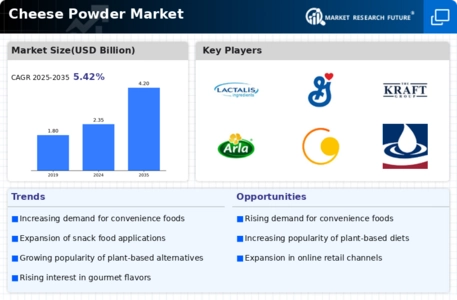
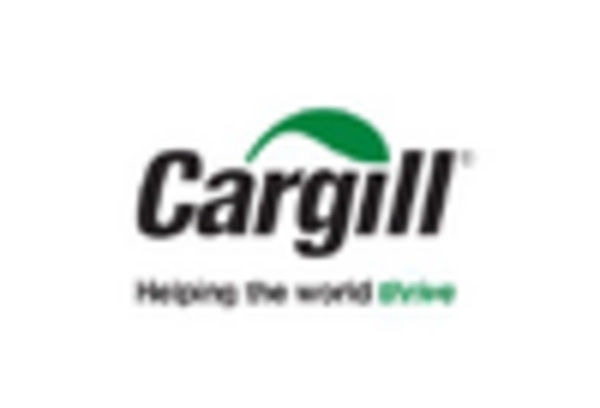


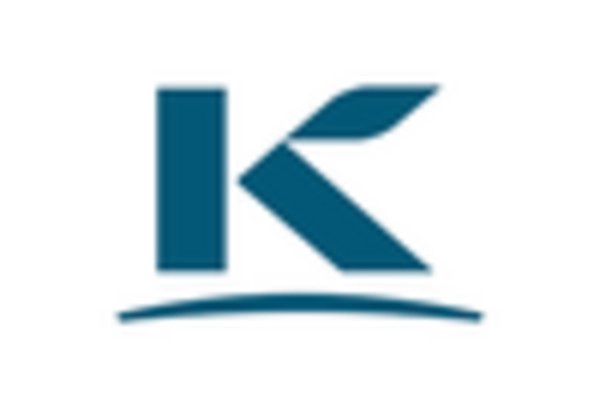
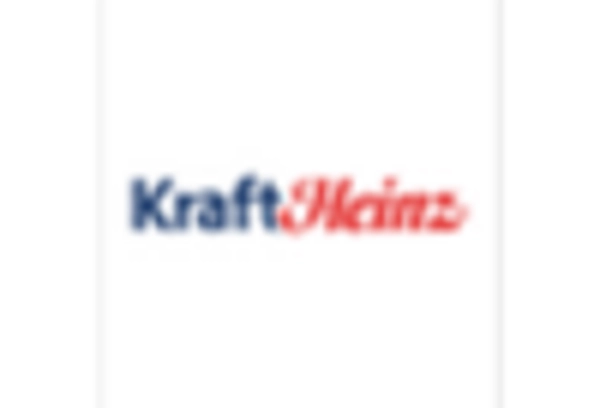
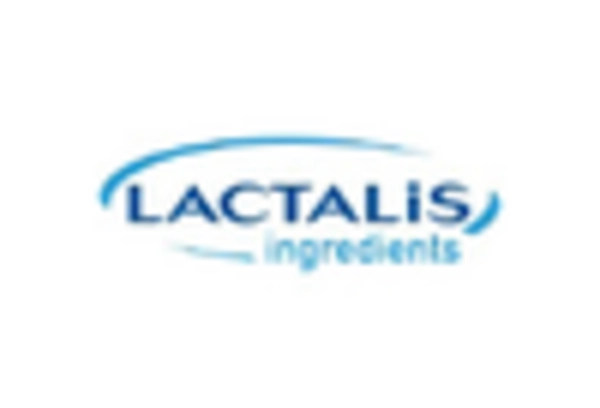

Leave a Comment